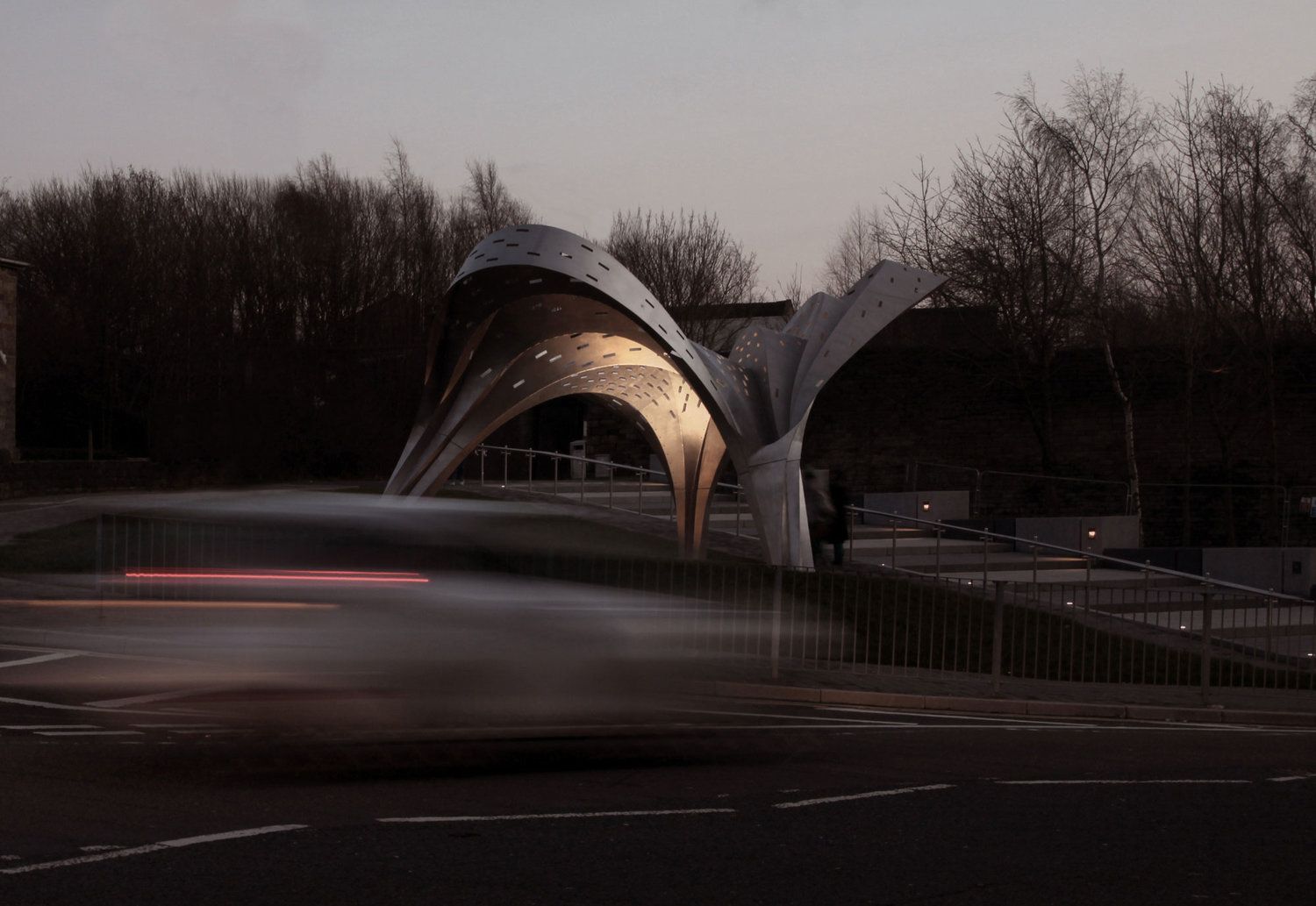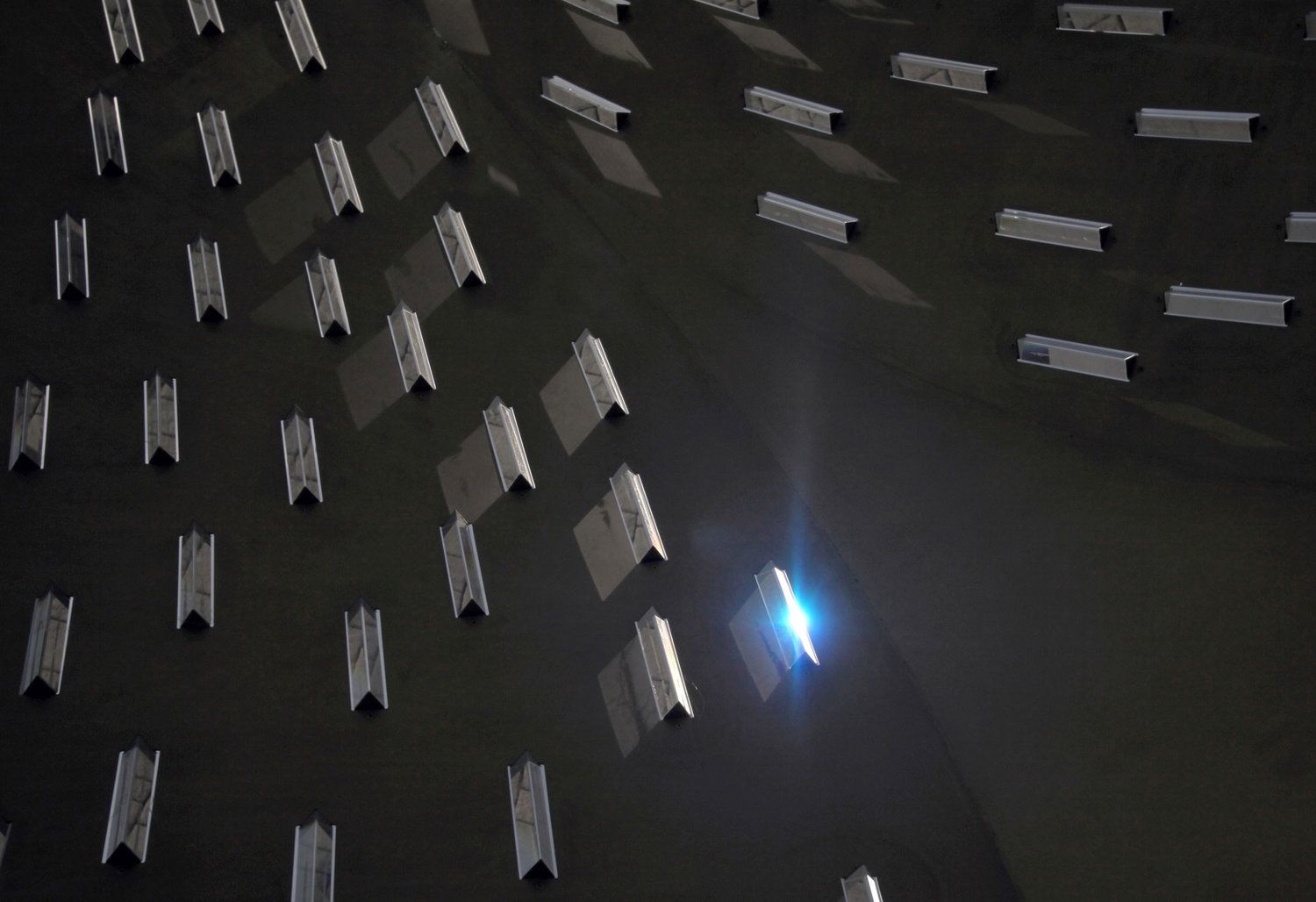Rainbow Gate | Tonkin Liu
Rainbow Gate Tonkin Liu: It is notable that Burnley was the first place in the UK to record its rainfall. This rain was an essential ingredient to the past of this region, filling rivers to provide power for mills and moistening the air to keep the cotton crop supple for weaving. After the mills receded, the area reinvented itself as a focal point of advanced manufacturing and engineering.
These three areas of expertise- milling, weaving, and engineering-disparate yet related, are the all avenues which led to the present and without which, the region would be something else entirely. The architect Tonkin Liu created the Princess Way Gateway or Rainbow Gate perhaps seeking to draw on this point, perhaps merely seeking to create a point of unity at the convergence of three physical avenues. The gate-like structure (because it acts as more than a gate) welcomes people and offers something which interacts. The water’s importance is highlighted twofold.
On a rainy day water will drum against the thin steel roof as it channels and runs to the ground. The rain is then in a way recorded or remembered by way of 133 prisms which capture sunlight after a storm (or just on a sunny day) to create hundreds of artificial rainbows. The motif of a rainbow is carried into the structure of the gate, where the natural strength of the bow is coupled with a triangular plan to create a very stable yet efficient structure.














